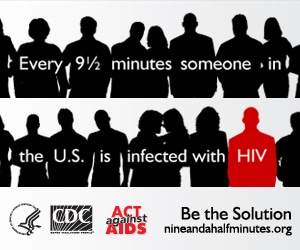 Image via Wikipedia
Image via Wikipedia
It's World AIDS Day today and I am feeling a bit nostalgic. I am reminded that my goal when I attended graduate school from 1990 to 1993 was to gain enough knowledge and experience as a clinical social worker to pursue a position helping persons living with HIV. I even wrote a Master's Thesis on the subject: Understanding the Biopsychosocial Needs of Women Living with HIV/AIDS.
I consider myself fortunate to have worked in the field of HIV/AIDS as a social work intern and clinical social worker from 1992 to 2000.
Back when I started, HIV/AIDS seemed like a death sentence. Between 1992 and 1995, highly active antiretroviral therapy (HAART) did not exist. As a result, I worked with many clients facing death and dying. My role encompassed keeping hope alive in the midst of hopelessness and despair. The greatest service I provided was simply being there to listen when my clients needed to talk.
In 1995 came the beginning of the age of antiretroviral medications. These powerful medications were the hope that had been previously so scarce. Over the next five years, HIV/AIDS service providers like me scrambled to learn a whole alphabet soup of names like AZT, 3TC, DDI, DDC and D4T. Then there were the groundbreaking first protease inhibitors with funny names like Invirase, Ritonavir, Crixivan and Viracept. These were the drugs that were keeping people alive.
 Image via Wikipedia
Image via Wikipedia
I watched from my front row seat as HIV/AIDS went from being a life-threatening illness to a chronic, manageable illness right here in Los Angeles. My focus switched from counseling about death and dying to helping persons with HIV/AIDS begin to live their lives again. Clients who had been living on disability and preparing to die all of a sudden were feeling good and going back to work. It was an amazing transformation.
Now I know that not all the world has seen changes in the HIV/AIDS pandemic as dramatic as the ones I have seen in my hometown. It is important to remember too that with the recession, public funding for HIV/AIDS programs will be cut and access to medications for those who are poor, homeless and disadvantaged is now in jeopardy. Treating HIV is a life-long commitment to taking medications every single day for the rest of your life. Without those medications, life is very much like it was back in 1990--HIV+ people dying from AIDS everyday.
Today is the day to consider a donation to your local HIV/AIDS service organization because the HIV pandemic is far from over.



![Reblog this post [with Zemanta]](http://img.zemanta.com/reblog_b.png?x-id=d9c9f8de-7b60-4909-b77c-7261c8473a0e)



Reply to this post
Post a Comment